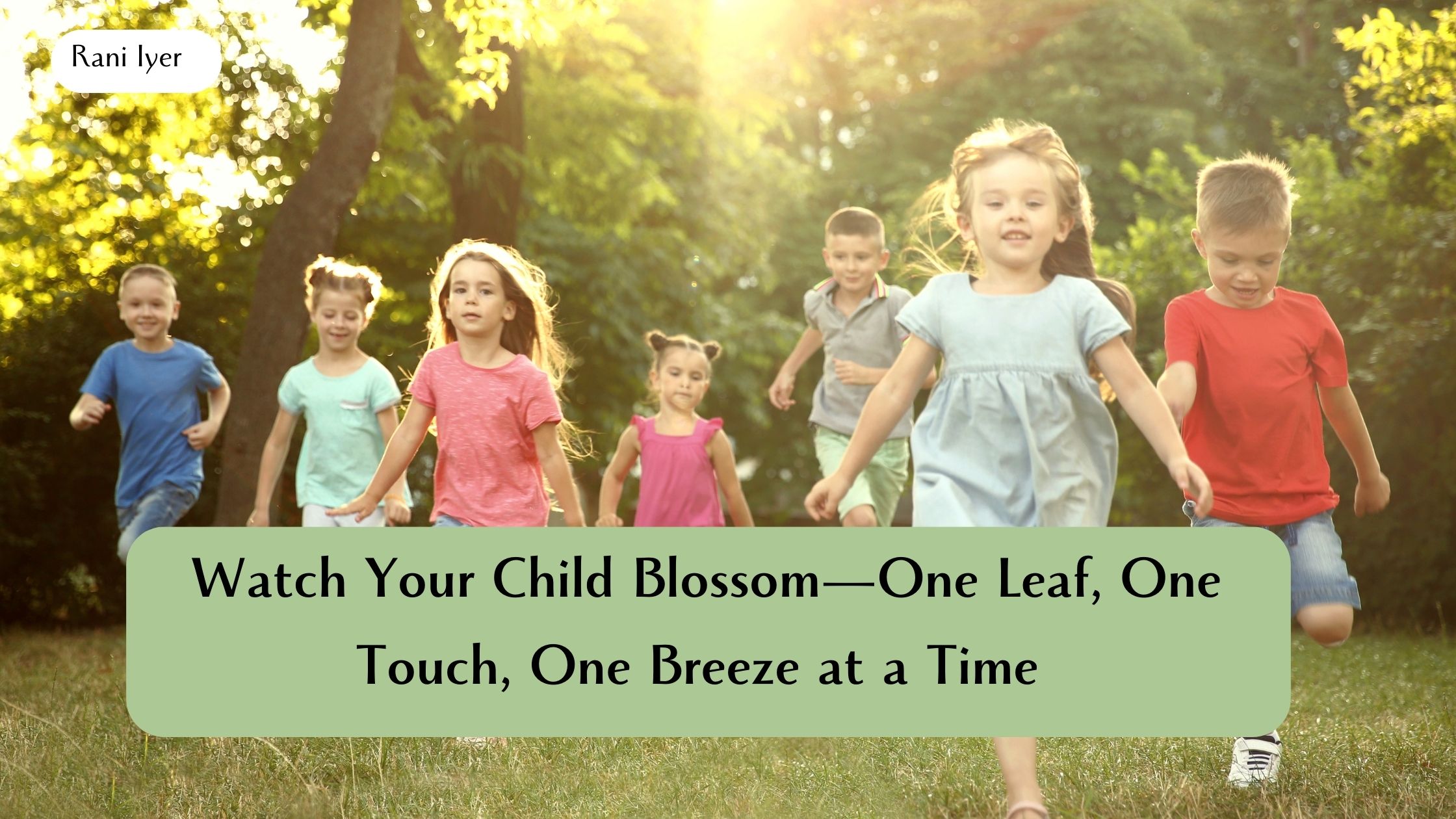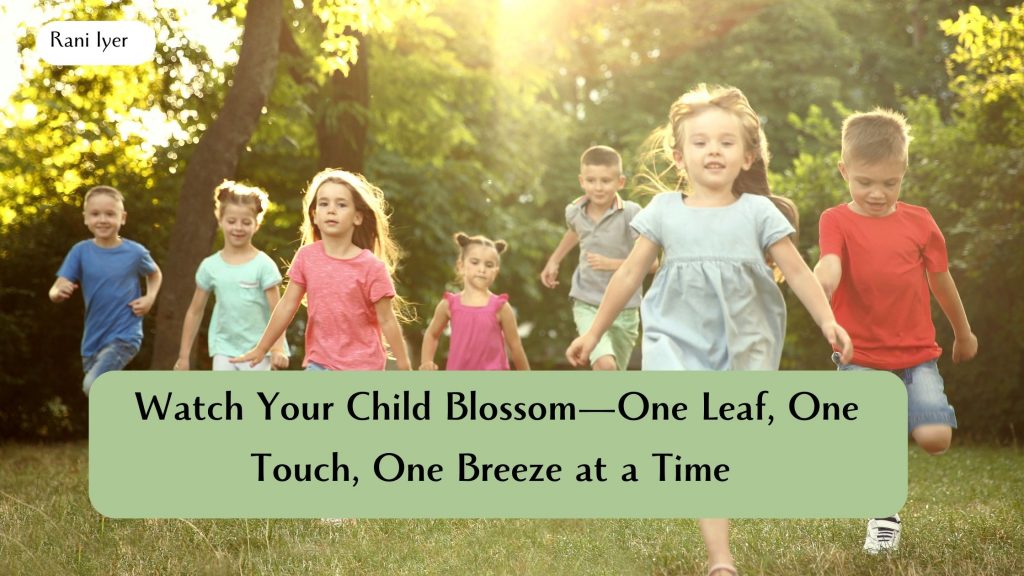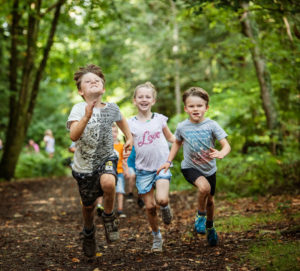Imagine your child running barefoot through soft grass, giggling as they splash in a cool stream, or curiously inspecting the rough bark of a tree. These moments aren’t just fun—they’re powerful learning experiences. Nature is the ultimate sensory playground, offering endless opportunities for children to engage their senses while sparking cognitive growth. For parents and teachers, understanding the science behind sensory play and its benefits can transform how you nurture young minds. In this blog post, we’ll explore why sensory play is essential, how nature amplifies its impact, and why combining the two creates a tremendous boost for kids’ cognitive abilities. Let’s dive into this trending topic that’s capturing the hearts of educators and families alike!
Why Sensory Play Matters: The Science Behind It
Sensory play—any activity that stimulates a child’s senses of touch, sight, sound, smell, taste, balance, or movement—is more than just messy fun. It’s a cornerstone of early childhood development, backed by decades of research. According to experts, sensory experiences help build neural connections in the brain, laying the foundation for learning, memory, and problem-solving.
Dr. Carla Hannaford, a neurophysiologist, explains that sensory stimulation triggers neurotransmitters that strengthen synapses—the building blocks of cognition. These connections are critical during early childhood when the brain is most plastic, or adaptable. A 2017 study in Frontiers in Psychology found that sensory play, like exploring textures or sounds, activates multiple brain regions simultaneously, enhancing attention, concentration, and critical thinking skills.
For children, sensory play is how they make sense of the world. When a toddler squishes mud between their fingers or listens to birds chirping, they’re not just playing—they’re processing information, developing fine motor skills, and learning to regulate emotions. This hands-on exploration is vital for neurodiverse children, too, as it supports sensory integration, helping them adapt to overwhelming environments.
The Power of Play: Why It’s Essential for Kids
Play is the language of childhood, and it’s far more than a pastime. It’s how kids learn to navigate life. Renowned psychologist Jean Piaget emphasized that children in the sensorimotor stage (birth to 2 years) learn cause and effect through playful exploration, while older kids develop symbolic thinking through imaginative play. Lev Vygotsky, another pioneer, noted that play fosters social skills, creativity, and problem-solving—skills that last a lifetime.
Research from Forbes highlights that play builds resilience and self-regulation, helping kids manage stress and adapt to new situations. Whether it’s building a fort with sticks or pretending to be forest explorers, play encourages kids to take risks, collaborate, and think outside the box. These experiences are critical for developing executive functions like planning, focus, and impulse control, which are predictors of academic and life success.
For parents and teachers, prioritizing play means giving kids the freedom to explore without rigid structure. It’s about letting them get a little dirty, make mistakes, and discover their own solutions. In a world obsessed with screens, unstructured play is a must-have antidote to overstimulation, fostering mindfulness and creativity.
Nature: The Ultimate Sensory Playground
Now, let’s take sensory play to the next level by bringing it outdoors. Nature is a sensory-rich environment that engages every sense in ways no indoor setting can match. The rustle of leaves, the scent of pine, the feel of cool pebbles—each experience awakens curiosity and fuels learning. Here’s why nature is perfect for sensory play:
- Multisensory Stimulation: Nature offers a symphony of textures, sounds, colors, and smells. A walk in the woods might involve touching smooth river rocks, hearing a distant waterfall, or smelling wildflowers. These layered experiences activate multiple neural pathways, boosting cognitive development.
- Open-Ended Exploration: Unlike structured toys, nature has no rules. A stick can be a sword, a bridge, or a drawing tool. This open-ended play sparks imagination and problem-solving, as kids decide how to interact with their environment.
- Emotional Benefits: Studies from Healthline show that sensory play in nature reduces stress and anxiety. The calming effect of greenery and natural sounds helps kids regulate emotions, making it ideal for children with sensory sensitivities or ADHD.
- Physical Development: Climbing trees, balancing on logs, or digging in dirt hones gross and fine motor skills. These activities build coordination and strength, which are essential for tasks like writing or tying shoes.
- Connection to the Environment: Nature-based play fosters a love for the planet, teaching kids to respect and care for their surroundings. It’s a lesson in stewardship that starts young.
A systematic review in PMC found that nature-based play supports not just physical health but also cognitive and social-emotional growth. Kids who play outdoors show better focus, creativity, and pre-academic skills like counting or language use compared to their indoor peers.
Combining Nature and Sensory Play: A Cognitive Powerhouse
When you combine sensory play with the natural world, you create a game-changing recipe for cognitive growth. Here’s how this dynamic duo supercharges kids’ brains:
- Enhanced Neural Connections: Nature’s diverse stimuli—like the crunch of leaves or the sight of a fluttering butterfly—engage multiple senses at once, strengthening neural networks. This multisensory input is like a workout for the brain, improving memory and processing speed.
- Boosted Creativity: Nature’s unpredictability encourages kids to think creatively. A pile of acorns might inspire a counting game, a fairy house, or a mini dam in a stream. This flexibility fosters divergent thinking, a key component of innovation.
- Improved Focus and Attention: Research from SplashLearn suggests that outdoor sensory activities enhance attention spans. The natural environment provides just the right amount of stimulation—engaging without overwhelming—helping kids stay focused longer.
- Social and Emotional Growth: Group activities like building a nature scavenger hunt or planting a garden teach collaboration and empathy. Kids learn to share ideas and negotiate, skills that translate to classrooms and beyond.
- Pre-Academic Skills: Nature play naturally integrates math, science, and literacy. Sorting leaves by size, observing animal tracks, or describing a flower’s scent builds foundational knowledge in a fun, memorable way.
For parents and teachers, this combination is a parenting hack and a teaching superpower. It’s low-cost, accessible, and endlessly adaptable. A simple backyard or park can become a classroom where kids learn through joy and discovery.
Childhood Mental Health and Nature Play
Childhood mental health is a growing concern. According to the World Health Organization, one in seven children aged 10–19 worldwide experiences a mental health disorder, such as anxiety or depression. In the U.S., the CDC reports a 40% increase in persistent sadness or hopelessness among high school students from 2009 to 2019. Factors like academic pressure, social media, and reduced opportunities for free play contribute to this trend.
Nature play offers a counterbalance—a way to nurture emotional resilience and reduce stress naturally. Let’s explore how, with evidence from research.
Research-Backed Benefits of Nature Play for Mental Health
1. Reduces Stress and Anxiety
Nature has a calming effect on the brain. A 2021 study by Akpinar in Turkey found that urban green spaces with natural elements (like trees and open views) significantly reduced stress and improved mental health in teenagers. The sensory input—such as the sound of wind or the sight of greenery—lowers cortisol levels, the stress hormone.
For younger children, a 2019 study in Scientific Reports showed that just 20 minutes of outdoor play in a park reduced stress markers in kids aged 6–12. The tactile experience of touching grass or splashing water engages the parasympathetic nervous system, promoting relaxation.
Practical Tip: Encourage kids to lie on the grass or walk barefoot to connect with nature’s textures.
2. Boosts Emotional Resilience
Nature play fosters emotional regulation by allowing children to navigate challenges independently. A 2021 study in Finland by Hakoköngäs and Puhakka found that adolescents who spent time in natural environments reported improved mood and emotional renewal. Activities like building forts or exploring trails give kids a sense of accomplishment, boosting self-esteem.
For children with ADHD or anxiety, sensory-rich nature play can be grounding. A 2020 study in Pediatrics found that outdoor play improved attention and reduced hyperactivity in children with ADHD, likely due to the calming effect of sensory input like rustling leaves or soft soil.
Practical Tip: Set up a “nature challenge” where kids build something using sticks and stones, fostering problem-solving and confidence.
3. Enhances Creativity and Cognitive Function
Unstructured play in nature sparks imagination. A 2017 study in Frontiers in Psychology showed that children who engaged in outdoor free play demonstrated higher creativity and problem-solving skills than those in structured settings. The varied sensory input—such as the smell of pine or the sight of shifting clouds—stimulates divergent thinking.
Cognitively, nature play supports focus and memory. A 2015 study in Environmental Psychology found that children who played in green spaces had better working memory and attention spans than those in indoor or urban settings.
Practical Tip: Encourage scavenger hunts where kids find objects of different colors, shapes, or textures to engage their senses and creativity.
4. Supports Social Connection and Empathy
Nature play often involves collaboration, whether it’s building a dam in a stream or playing hide-and-seek in the woods. A 2023 study by the Children & Nature Network found that group nature activities improved social bonds and empathy in adolescents. Sensory experiences, like sharing the feel of cool water or the sound of a frog, create shared moments that deepen relationships.
For children struggling with social anxiety, nature provides a low-pressure environment to connect. The sensory richness distracts from self-consciousness, allowing authentic interactions.
Practical Tip: Organize a group nature walk where kids share one sensory discovery (e.g., a smooth rock or a chirping bird) with the group.
Sensory Input: The Secret Sauce of Nature Play
Why is sensory input so powerful? The human brain processes sensory information to make sense of the world, and children’s developing brains are especially sensitive. Nature provides a “sensory buffet” that’s both stimulating and soothing. For example:
- Touch: Feeling mud, sand, or bark helps kids regulate sensory processing and reduces overwhelm.
- Sound: Natural sounds like birds or flowing water are less jarring than urban noise, promoting calmness.
- Sight: Green hues and open vistas relax the eyes and mind, reducing mental fatigue.
- Smell: Scents like flowers or rain-soaked earth trigger positive memories and emotions.
A 2006 study of twins suggested that hypersensitivity to sensory stimuli may have a genetic component, but nature’s gentle, varied input can help desensitize overreactive systems. Occupational therapists often use nature-based sensory integration therapy to support children with autism or sensory processing challenges.
Nature Play vs. Screen Time: A Mental Health Comparison
Today’s kids spend an average of 7 hours daily on screens, leaving little time for outdoor play. Excessive screen time is linked to anxiety, depression, and reduced attention spans, according to a 2024 scoping review in PMC. Unlike the overstimulation of screens, nature play offers balanced sensory input that soothes rather than overwhelms.
Screens provide predictable, two-dimensional stimuli, while nature is dynamic and three-dimensional. A 2020 study in The Journal of Pediatrics found that children with more outdoor playtime had lower rates of anxiety compared to those with high screen use. Replacing just 30 minutes of screen time with nature play can make a difference.
Practical Tip: Create a “screen-free hour” where kids explore a backyard or park instead, focusing on one sensory experience (e.g., listening for sounds).
How to Encourage Nature Play: Tips for Parents and Educators
- Start Small: You don’t need a forest—a backyard, community garden, or local park works. Look for sensory-rich spots like streams or grassy areas.
- Follow Their Lead: Let kids choose what to explore, whether it’s collecting rocks or chasing butterflies. Child-led play boosts autonomy and joy.
- Incorporate Sensory Games: Try a “sensory scavenger hunt” (find something soft, something rough, etc.) or a sound map (draw what they hear).
- Make It Routine: Aim for at least 30 minutes of outdoor play daily. Even short bursts improve mood and focus.
- Join In: Play alongside kids to model curiosity and build connection. Share sensory discoveries like the feel of wet leaves.
- Prepare for Mess: Embrace dirt and water—it’s part of the sensory magic. Keep towels and spare clothes handy.
- Educate Schools: Advocate for nature-based recess or outdoor classrooms, citing studies like those from the Children & Nature Network.
Practical Ideas for Nature-Based Sensory Play
Ready to get started? Here are some sensory play ideas that parents and teachers can try:
- Nature Sensory Bins: Fill a container with natural materials like pinecones, stones, and moss. Add scoops or tongs for kids to explore textures and practice fine motor skills. Hide small treasures for a scavenger hunt twist.
- Sound Walks: Take kids on a listening adventure. Pause to identify sounds—birds, wind, crunching leaves. This sharpens auditory processing and mindfulness.
- Mud Kitchen: Set up a pretend kitchen with old pots, spoons, and mud. Kids can “cook” with dirt, water, and flowers, engaging touch, smell, and imagination.
- Barefoot Path: Create a trail with different surfaces—grass, sand, pebbles, bark. Walking barefoot enhances sensory processing and balance.
- Nature Art: Collect leaves, twigs, and petals to create collages or mandalas. This combines creativity with fine motor practice and visual discrimination.
Pro Tip: Safety first! Supervise young kids, check for allergens, and avoid small objects that could be choking hazards.
Overcoming Barriers to Nature Play
Not every family has easy access to green spaces, and time constraints can be a hurdle. Urban families can seek out pocket parks, rooftop gardens, or even indoor plants to mimic nature’s sensory input. Community programs like nature clubs or library garden events can bridge gaps. For busy schedules, prioritize short, frequent outdoor moments over rare, lengthy outings.
Weather can also deter play, but sensory experiences like rain or wind can be exciting with proper gear. As Scandinavian parents say, “There’s no bad weather, only bad clothing.”
Reconnecting Kids with Nature for Mental Wellness
Nature play isn’t just fun—it’s a powerful tool for children’s mental health. By engaging in the senses, outdoor play reduces stress, builds resilience, sparks creativity, and fosters connection. Research confirms what many of us intuitively know: kids thrive when they’re free to explore the natural world. As parents, educators, and communities, let’s prioritize nature play to nurture happier, healthier children.
Call to Action: Try one nature play activity this week—maybe a walk to collect leaves or a moment to listen to birds. Share your experience in the comments or on social media with #NaturePlayForKids. Let’s inspire each other to get kids outdoors!
How to Make It Work: Tips for Parents and Teachers
- Start Small: You don’t need a forest. A backyard, park, or even a potted herb garden works. Use what’s available to create sensory moments.
- Be a Guide, Not a Director: Let kids lead the play. Ask open-ended questions like, “What does this feel like?” or “What can we make with this?” to spark curiosity.
- Incorporate Routine: Make nature play a daily habit, even if it’s just 10 minutes. Consistency builds skills over time.
- Adapt for All Ages: Babies can explore soft grass, toddlers can dig in sand, and older kids can journal about their observations. Tailor activities to developmental stages.
- Collaborate: Teachers can partner with parents to share ideas or organize nature playdates. Community involvement amplifies the impact.
The Long-Term Impact: Why It’s Worth It
Investing in nature-based sensory play isn’t just about today—it’s about shaping brighter futures. Kids who engage in regular sensory experiences show stronger problem-solving skills, better emotional resilience, and higher academic performance. A study cited by MSU Extension notes that sensory play builds the observation and manipulation skills kids need for math, science, and literacy. Meanwhile, time in nature fosters a lifelong love of learning and environmental stewardship.
For parents, it’s a chance to bond with your child while watching them grow. For teachers, it’s a classroom hack that makes learning engaging and inclusive. In a fast-paced, tech-driven world, nature offers a timeless, trending way to nurture curious, capable kids.
Join the Nature Play Movement
Nature is calling, and it’s time to answer. By embracing sensory play in the great outdoors, you’re giving kids a gift that lasts a lifetime: a brain primed for learning, a heart full of wonder, and a deep connection to the world around them. Whether you’re a parent looking for fun family activities or a teacher seeking innovative lesson plans, nature-based sensory play is your secret weapon.
Ready to get started? Share your favorite nature play ideas in the comments below, and let’s inspire each other to raise curious, creative kids. Don’t forget to follow Raniyer.com for more parenting tips, teacher resources, and child development insights. Let’s make every day a sensory adventure!
Citations:
Hannaford, C. Smart Moves: Why Learning Is Not All in Your Head. https://www.lattooland.com/blogs/parenting/science-behind-sensory-play-brain-development
The Power of Sensory Play in Childhood Development. Forbes. https://www.forbes.com/sites/jenniferpalumbo/2023/10/10/the-power-of-sensory-play-in-childhood-development/
24 Best Sensory Activities for Preschoolers in 2025. SplashLearn https://www.splashlearn.com/blog/best-sensory-activities-for-preschoolers/
Sensory Play: 20 Great Activities for Your Toddler or Preschooler. Healthline https://www.healthline.com/health/childrens-health/sensory-play
Nature play in early childhood education: A systematic review. PMC. https://pmc.ncbi.nlm.nih.gov/articles/PMC9687100/
Cognitive development and sensory play. MSU Extension https://www.canr.msu.edu/news/cognitive_development_and_sensory_play
The Importance of Sensory Play at Playgrounds. Miracle Recreation https://www.miracle-recreation.com/blog/the-importance-of-sensory-play-at-playgrounds





